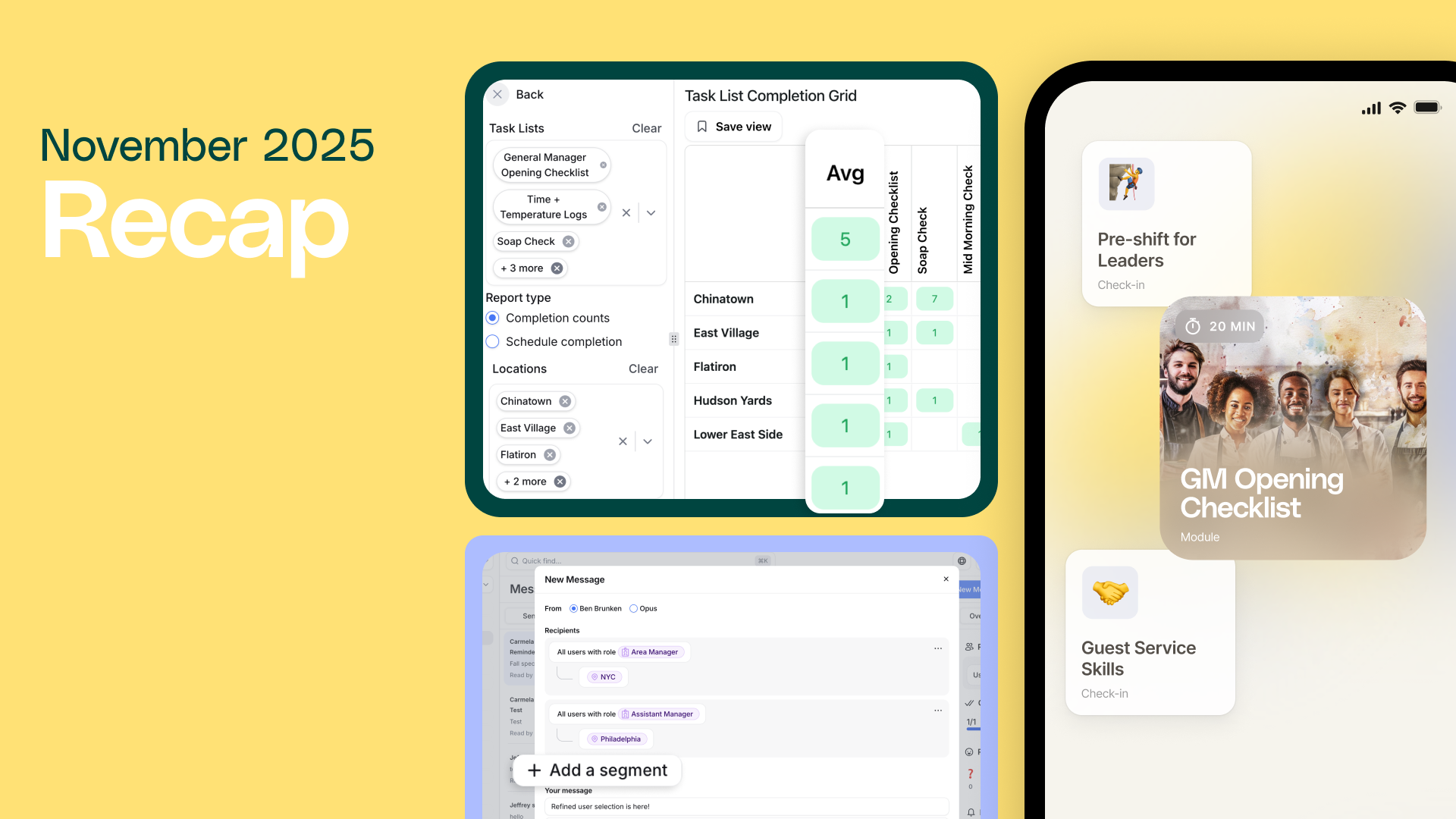Running a successful restaurant requires meticulous attention to detail and consistent execution. Well-designed checklists are essential tools that help ensure nothing falls through the cracks during the daily hustle of restaurant operations. Let's explore the most important checklists every restaurant should implement and the best practices for creating them.
The Power of Effective Restaurant Checklists
Properly implemented checklists can transform your restaurant operations by:
- Standardizing procedures across all locations
- Reducing training time for new employees
- Ensuring consistent customer experiences
- Maintaining food safety compliance
- Preventing costly mistakes and oversights
Essential Restaurant Checklists
Logs (Waste & Temperature)
Logs are critical for recording time-sensitive data that may need to be referenced later for reporting, compliance, or inventory management.
Best Practices:
- Create universal logs usable by all locations with optional sections
- Design for easy data retrieval and review
- Focus on quick, accurate recording of moment-in-time information
What to Include:
- Waste Logs: Item name, quantity, reason for waste, date/time, employee initials
- Temperature Logs: Item/location, target temperature, actual temperature, corrective actions, time checked, employee initials
Shift-Based Checklists (Opening, Midday, Closing)
These checklists ensure each shift starts and ends properly, with all necessary tasks completed.
Best Practices:
- Section by role and time of day
- Use appropriate question types:
- Checkboxes for routine tasks
- Multiple choice for variable quantity tasks
- Yes/No for conditional tasks
- Keep focused on shift preparation and transition
What to Include:
- Opening: Equipment startup, food prep, station setup, inventory check
- Midday: Restocking, cleanliness touch-ups, equipment maintenance
- Closing: Equipment shutdown, cleaning, inventory, cash reconciliation, security
Health Inspection Preparedness
This checklist helps maintain continuous compliance with health regulations and prepares staff for actual inspections.
Best Practices:
- Complete at least twice daily
- Cover all areas subject to inspection
- Design with actual health code requirements in mind
What to Include:
- Food storage temperatures
- Proper labeling and dating
- Hand washing stations and supplies
- Chemical storage
- Cross-contamination prevention
- Cleanliness of food contact surfaces
- Pest control verification
Creating Effective Checklists: Practical Considerations
When building your checklists, consider these implementation tips:
- Keep it focused: Each checklist should serve a specific purpose
- Make it scannable: Use clear sections and formatting
- Update regularly: Review and revise based on feedback and changing needs
- Include accountability: Add space for verification signatures
- Consider digital solutions: Digital checklists allow for better tracking, reporting, and embedding of helpful resources
Getting Started with Restaurant Checklists
Whether you're starting from scratch or improving existing checklists, begin by identifying your biggest operational pain points. Create checklists that address these issues first, then expand to cover other areas.
Our downloadable templates provide a solid foundation you can customize to fit your specific needs:
Free Resource: Download Essential Restaurant Checklists + Opening Checklist Template
Remember that the most effective checklists evolve over time. Regularly gather feedback from your team and make improvements based on real-world usage.
Want to learn more about implementing effective task lists and operational procedures? Discover how our digital task management system can transform your restaurant operations.






